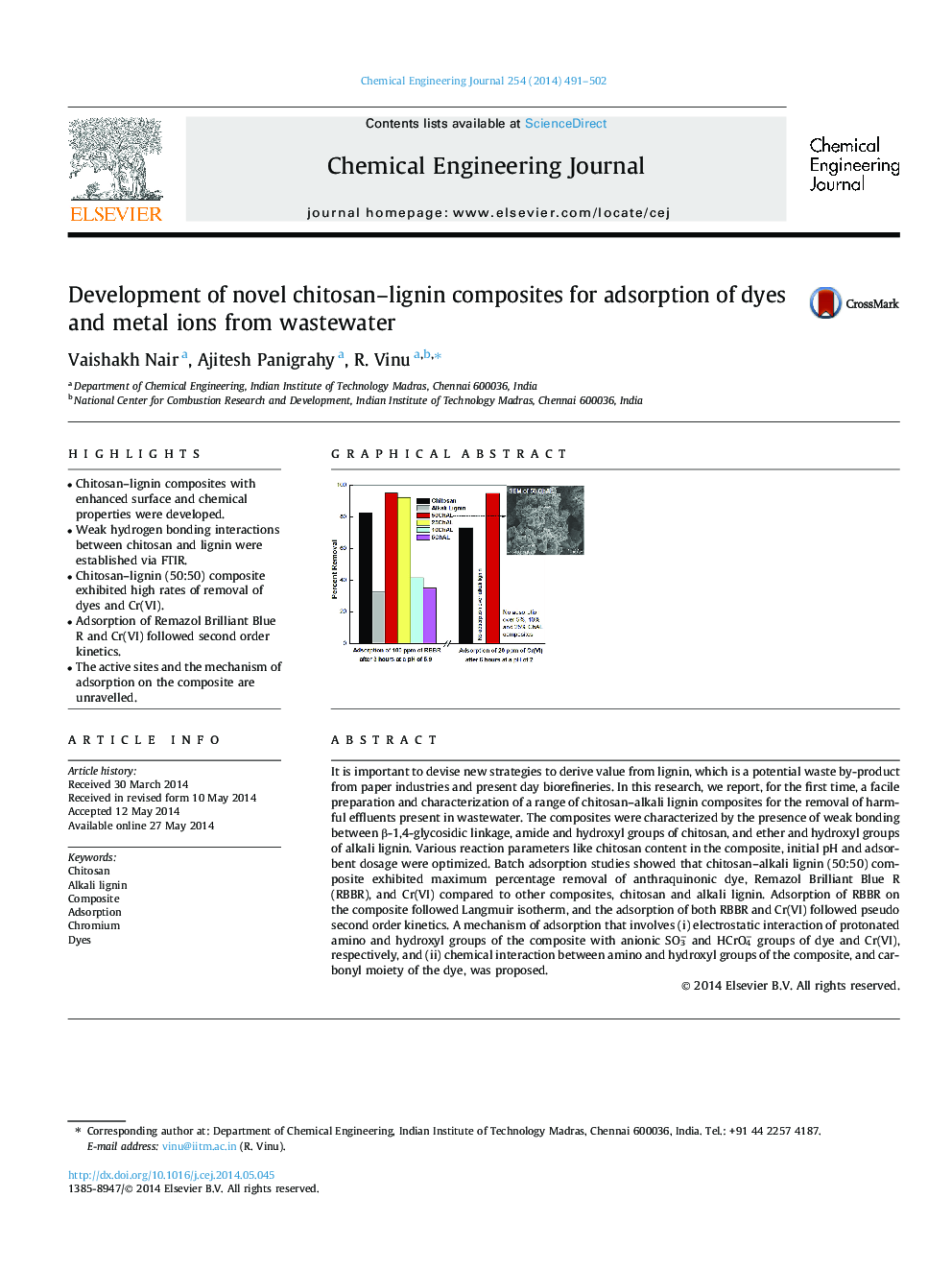| کد مقاله | کد نشریه | سال انتشار | مقاله انگلیسی | نسخه تمام متن |
|---|---|---|---|---|
| 147277 | 456388 | 2014 | 12 صفحه PDF | دانلود رایگان |
• Chitosan–lignin composites with enhanced surface and chemical properties were developed.
• Weak hydrogen bonding interactions between chitosan and lignin were established via FTIR.
• Chitosan–lignin (50:50) composite exhibited high rates of removal of dyes and Cr(VI).
• Adsorption of Remazol Brilliant Blue R and Cr(VI) followed second order kinetics.
• The active sites and the mechanism of adsorption on the composite are unravelled.
It is important to devise new strategies to derive value from lignin, which is a potential waste by-product from paper industries and present day biorefineries. In this research, we report, for the first time, a facile preparation and characterization of a range of chitosan–alkali lignin composites for the removal of harmful effluents present in wastewater. The composites were characterized by the presence of weak bonding between β-1,4-glycosidic linkage, amide and hydroxyl groups of chitosan, and ether and hydroxyl groups of alkali lignin. Various reaction parameters like chitosan content in the composite, initial pH and adsorbent dosage were optimized. Batch adsorption studies showed that chitosan–alkali lignin (50:50) composite exhibited maximum percentage removal of anthraquinonic dye, Remazol Brilliant Blue R (RBBR), and Cr(VI) compared to other composites, chitosan and alkali lignin. Adsorption of RBBR on the composite followed Langmuir isotherm, and the adsorption of both RBBR and Cr(VI) followed pseudo second order kinetics. A mechanism of adsorption that involves (i) electrostatic interaction of protonated amino and hydroxyl groups of the composite with anionic SO3− and HCrO4− groups of dye and Cr(VI), respectively, and (ii) chemical interaction between amino and hydroxyl groups of the composite, and carbonyl moiety of the dye, was proposed.
Figure optionsDownload as PowerPoint slide
Journal: Chemical Engineering Journal - Volume 254, 15 October 2014, Pages 491–502
